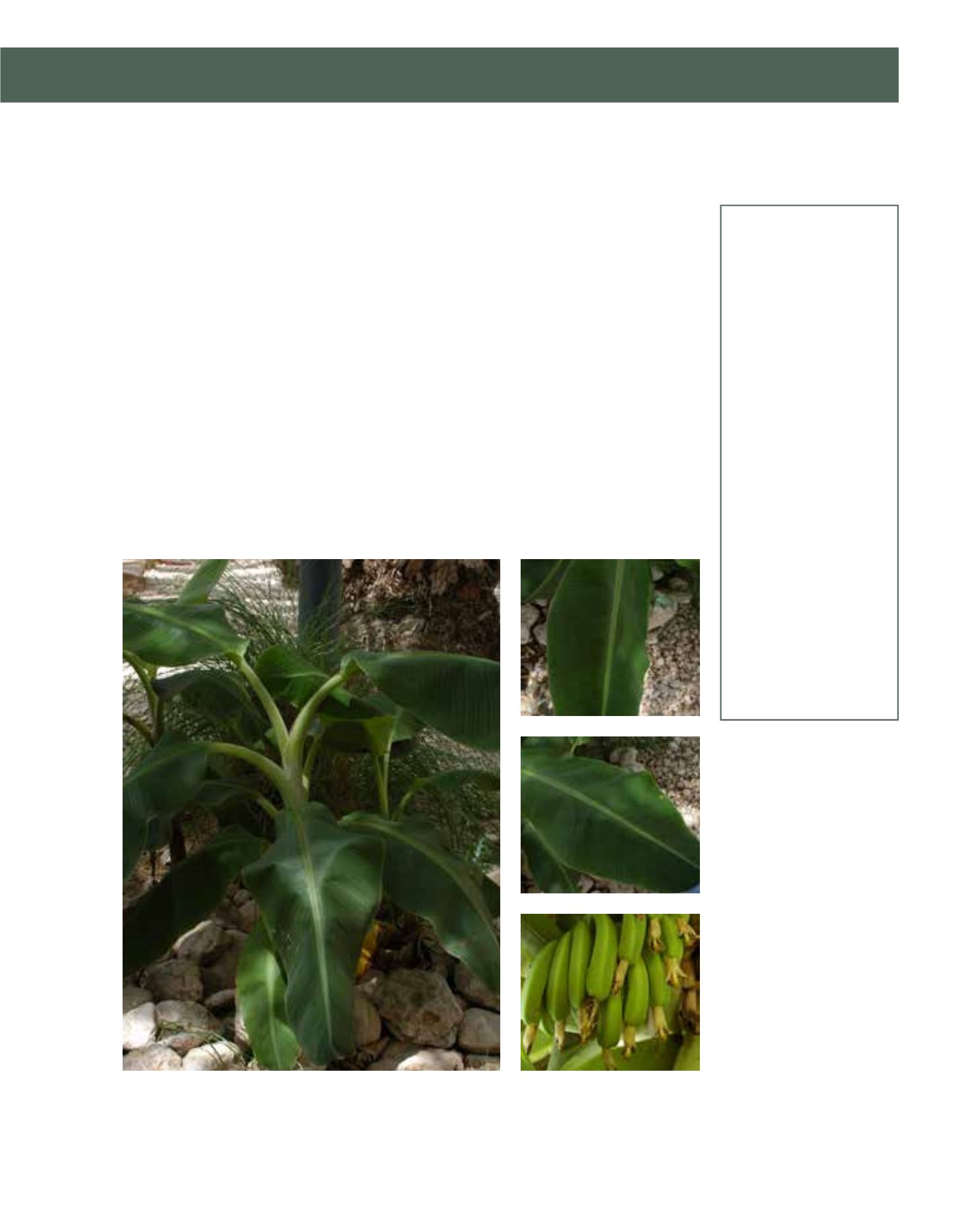

GENERAL
Origin
:
sub-tropical,
tropical
Vigour
:
fast growing
Humidity
:
very humid,
extremely humid
Propagation :
division
Maintenance :
moderate
CONDITIONS
Urban climate :
vulnerable
Dessication :
vulnerable
Stagnant water :
vulnerable
Irrigation
:
high
Salinity/ppm :
low (1000 ppm)
Hardiness
:
0°C
SHAPE
Type
:
shrub, perennial
Height
:
2 m-7 m
Spread
:
1.5 m-4 m
Foliage
:
evergreen
FLOWER
Colour
:
yellow
Period
:
January -
December
FRUIT
Type of fruit :
berry
Fruit size
:
15 cm - 20 cm
Toxicity
:
produced for
food, edible, fruit
Dwarf Bananas grow to a height of just 2 or 3 metres, and originate from southeast Asia and
northern Australia. They require abundant water and a warm location protected from wind. Frost
will kill the leaves including the ‘stem’, which is made up of strong petioles. Like many other her-
baceous plants, it instantly recovers from the corm after freezing, storm-breaking or severe prun-
ing. It tolerates full sun or partial shade, but demands nutrient-rich soil with a high percentage of
compost. Dwarf Bananas tolerate heat if abundant water is at hand without being stagnant. The
plants are propagated by offsets which are best separated at the end of summer. If temperatures
drop below 12°C, the growth stagnates without any sign of dormancy, except for the interrupted
thirst. Above this temperature, the Banana Plant is one of the heaviest feeders grown in Arriyadh,
where it is often seen in protected areas on farms. Liquid fertiliser applied every fortnight sup-
ports it best. However, a lesser outlay is the application of slow-release granules at the beginning
of spring, summer and autumn. In winter, plants do best without supplemental watering and
must not be fertilised. Shoots usually flower during their second year in hanging clusters with
pale-yellow florets. They need another 6 months to ripen. Dwarf Bananas give an immediate fee-
ling of an exotic, humid-tropical climate. They should be grown in locations sheltered from the
wind, adjacent to a pond or as an accent plant in a courtyard.
208
Musa acuminata,
Musaceae
Dwarf Banana,
Dwarf Cavendish
















